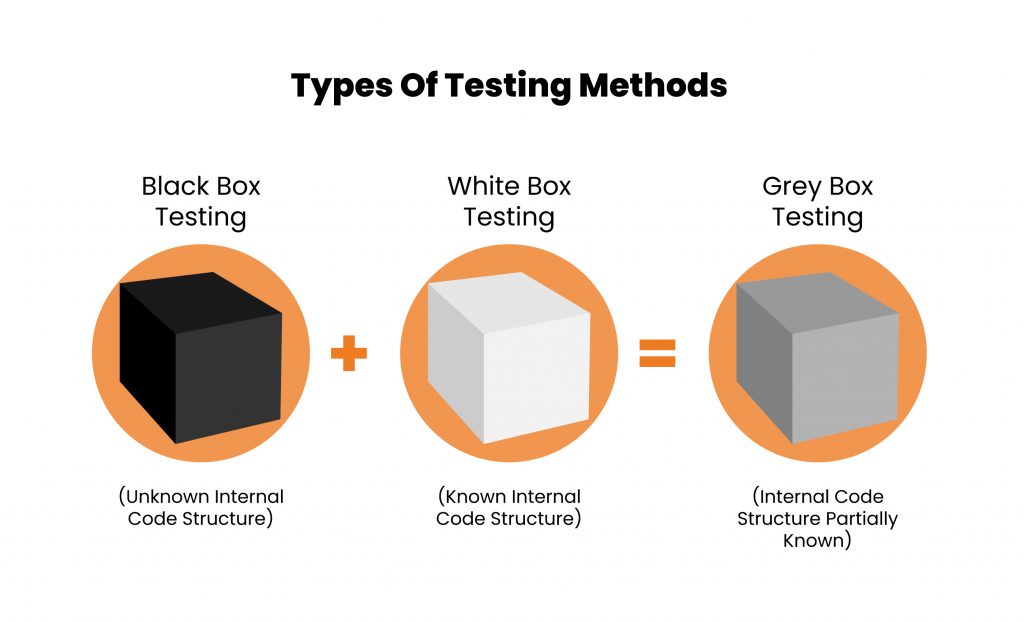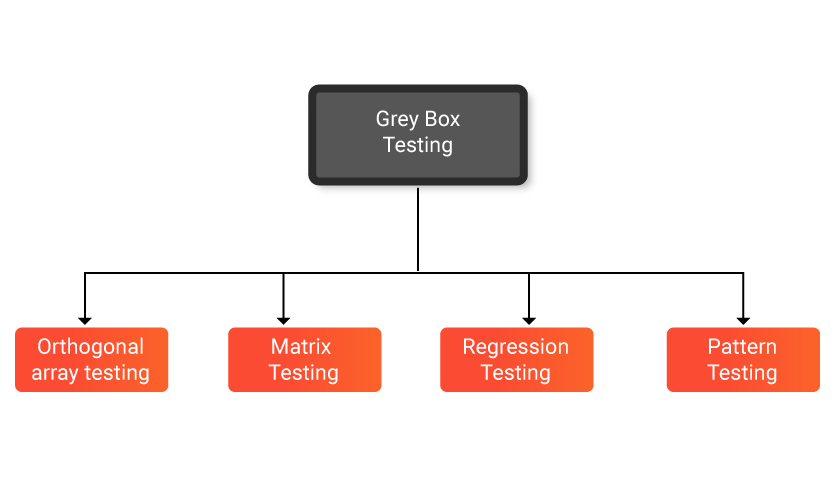What is Grey Box Testing ?
Grey box testing is a software testing technique that combines aspects of both black box and white box testing. It involves testing the software with partial knowledge of the internal workings of the application. This means the tester has limited access to the internal structures or algorithms, usually at the level of data structures and algorithms but not at the level of the source code itself.

Why is Grey Box Testing Needed?
Grey box testing is needed for several reasons:
- Balanced Approach: It offers a balanced approach by combining the methodologies of black box and white box testing, allowing testers to design test cases based on the functional specifications and internal behavior of the system.
- Improved Test Coverage: By understanding the internal structures, testers can create more effective test cases that cover a wider range of possible inputs and states, potentially finding defects that are missed by black box testing.
- Enhanced Security Testing: It can help identify security vulnerabilities that are not visible from the outside (black box) but do not require full code access (white box).
- Efficient Defect Identification: It helps in identifying defects that might be related to data flow and control flow within the system.
Types of Grey Box Testing Techniques

Grey box testing encompasses various techniques that leverage both functional testing methods and insights into the internal workings of the application. Here are some common types of grey box testing techniques:
1. Matrix Testing
Matrix testing involves defining and executing test cases based on the relationships between different modules or components of the application. This technique helps in understanding how different parts of the application interact with each other.
2. Regression Testing
Regression testing ensures that new code changes do not adversely affect the existing functionalities of the application. In grey box testing, this involves checking not only the end-user functionalities but also understanding how these changes impact the internal modules.
3. Pattern Testing
Pattern testing identifies and tests common patterns of use, error, or failure within the application. By having some knowledge of the internal architecture, testers can focus on areas where patterns are most likely to emerge.
4. Orthogonal Array Testing
Orthogonal array testing is a statistical method used to design test cases that cover a wide range of input combinations. This technique is useful for grey box testing as it helps in minimizing the number of test cases while maximizing coverage of possible input scenarios.
Benefits and Challenges of Grey Box Testing
Benefits:
- Improved Test Coverage: Access to internal structures enables thorough testing, covering edge cases and internal states.
- Efficient Testing: Testers can focus on critical paths and potentially vulnerable areas of the software, making the testing process more efficient.
- Early Detection of Defects: Partial knowledge allows for early identification of issues related to internal workings, which might not be evident in black box testing.
- Better Testing Accuracy: Test cases can be designed more accurately based on knowledge of the internal processes.
Challenges:
- Limited Internal Knowledge: Testers do not have full access to the source code, which might limit the depth of testing compared to white box testing.
- Complexity: It requires testers to have a certain level of understanding of the internal structures and algorithms, which can be complex and time-consuming.
- Resource Intensive: Grey box testing can be resource-intensive as it involves both functional and partial structural testing.
Tools for Grey Box Testing
Some commonly used tools for grey box testing include:
- Selenium: Primarily used for web application testing, supports grey box testing by allowing testers to interact with web elements and verify internal processes through APIs.
- Postman: Useful for API testing, allowing testers to send requests and validate the responses, which helps in understanding internal data handling.
- Cucumber: Facilitates behavior-driven development (BDD), enabling testers to write tests that describe the behavior of the application with partial knowledge of its internal workings.
- SoapUI: Used for testing SOAP and REST web services, providing insights into internal operations through request-response validation.
- JMeter: A performance testing tool that helps in understanding the internal performance characteristics of the application.
Differences Between Black Box, Grey Box, and White Box Testing
| Aspect | Black Box Testing | Grey Box Testing | White Box Testing |
|---|---|---|---|
| Knowledge Level | No knowledge of internal implementation. | Partial knowledge of internal structures and algorithms. | Full knowledge of internal code and implementation. |
| Focus | Functional requirements and specifications. | Functional specifications with some internal insights. | Code structure, logic, and internal design. |
| Test Design | Based on external user requirements and functionalities. | Based on functional requirements and partial internal understanding. | Based on detailed internal code and logic. |
| Testing Approach | Input/output driven. | Input/output driven with some focus on internal processes. | Detailed examination of internal logic and structure. |
| Coverage | Limited to functional testing. | Enhanced coverage due to partial internal understanding. | Maximum coverage including all possible paths and conditions. |
| Tools | Selenium, QTP, Postman | Selenium, Postman, Cucumber, SoapUI, JMeter | JUnit, NUnit, SonarQube, Emma, Clover |
| Complexity | Low to moderate complexity. | Moderate to high complexity due to partial internal understanding. | High complexity due to detailed code examination. |
| Required Skills | Basic understanding of functional testing. | Intermediate skills, understanding of internal structures. | Advanced skills, in-depth knowledge of programming and code analysis. |
| Detection | Identifies high-level defects in functionality. | Identifies defects in data flow and intermediate processes. | Identifies low-level defects in code logic and structure. |
Conclusion
Grey box testing is a versatile and effective software testing approach that blends the principles of black box and white box testing. It enables testers to design test cases based on both functional specifications and partial internal knowledge of the application, leading to improved test coverage and defect identification. By leveraging techniques such as matrix testing, regression testing, pattern testing, and more, grey box testing strikes a balance between thoroughness and practicality. This approach is particularly beneficial in identifying security vulnerabilities, ensuring robust error handling, and enhancing overall software quality. Despite its challenges, including the need for intermediate skill levels and potentially higher complexity, the benefits of grey box testing make it a valuable component of a comprehensive testing strategy.
FAQ's
What is grey box testing?
Grey box testing is a software testing method that combines elements of black box and white box testing. It involves testing the software with partial knowledge of its internal workings, focusing on both functional and structural aspects.
Why is grey box testing important?
Grey box testing is important because it provides a balanced approach that enhances test coverage and defect detection. It helps identify issues related to data flow, control flow, and security vulnerabilities that might be missed by purely black box or white box testing.
What are the key benefits of grey box testing?
Key benefits include improved test coverage, early detection of defects, efficient testing processes, better accuracy in test design, and enhanced ability to identify security issues.
What challenges are associated with grey box testing?
Challenges include the need for intermediate to advanced skill levels, potential complexity due to partial internal knowledge, and the resource-intensive nature of combining functional and structural testing methods.
What techniques are used in grey box testing?
Common techniques include matrix testing, regression testing, pattern testing, orthogonal array testing, fault injection testing, sanity testing, risk-based testing, error guessing, data flow testing, and API testing.
How does grey box testing differ from black box and white box testing?
- Black Box Testing: No knowledge of internal implementation; focuses on input/output.
- Grey Box Testing: Partial knowledge of internal structures; combines functional and limited structural testing.
- White Box Testing: Full knowledge of internal code and implementation; focuses on code logic and structure.
What tools are commonly used for grey box testing?
Common tools include Selenium, Postman, Cucumber, SoapUI, and JMeter, which help in testing web applications, APIs, and performance aspects by leveraging partial internal knowledge.
When should grey box testing be used?
Grey box testing is suitable for situations where understanding both the external functionalities and some internal processes is crucial. It's often used in security testing, performance testing, and integration testing of complex systems.
By incorporating grey box testing into the software development lifecycle, organizations can achieve a more comprehensive understanding of their software's behavior, leading to higher quality and more reliable applications.